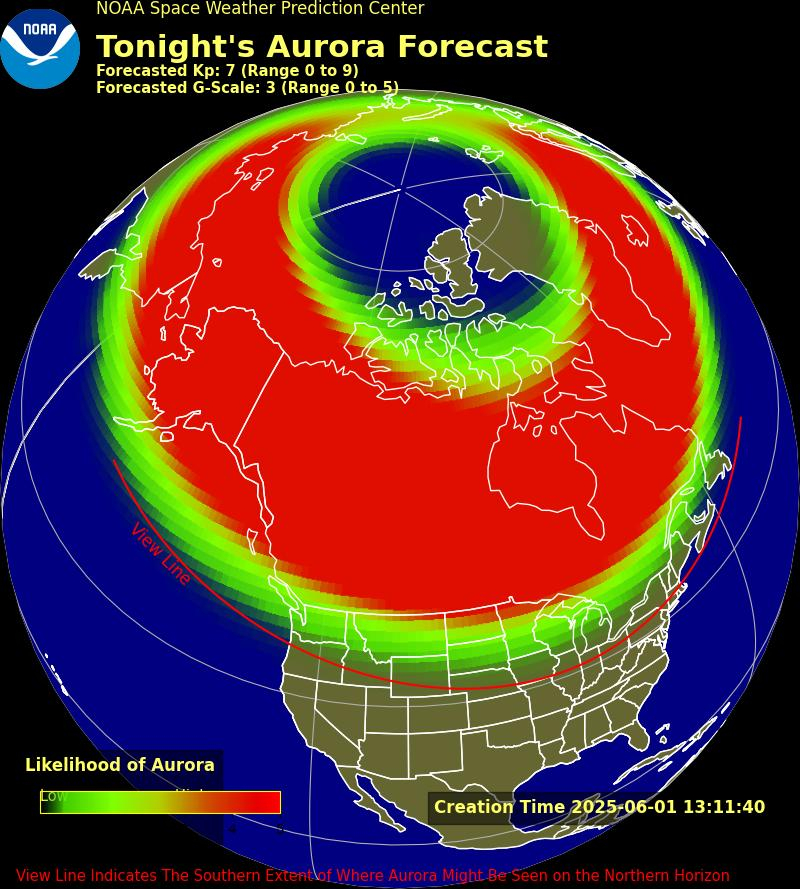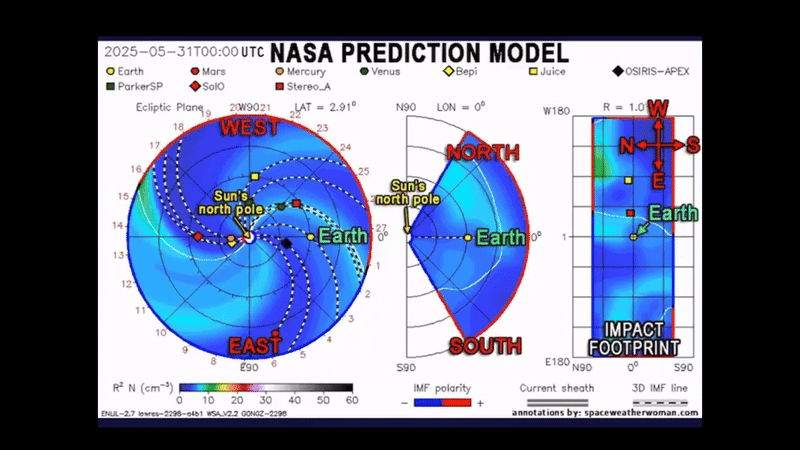Christmas is almost here, and the night sky obliges by presenting a beautiful display of celestial sights, perfectly timed out to coincide with the holiday.
In ancient times, Dec. 25 was the date of the lavish Roman festival of Saturnalia, a sort of bacchanalian Thanksgiving to the god of agriculture, for whom the slowest moving of the then-known planets was named. Saturnalia was celebrated on the date of the winter solstice by the calendar then in use, and it also marked the fact that the sun had stopped creeping southward in the noon sky and would thenceforth cross the meridian higher each day, warming the Earth and reawakening nature.
This holiday of the Romans was a version of similar celebrations by other early peoples. It has been said that early Christians chose the date of Saturnalia on which to celebrate Christmas in order to avoid attention and thus escape persecution. When the Roman emperor Constantine officially adopted Christianity in the 4th century, the date of Christmas remained Dec. 25.
Related: The brightest visible planets in December’s night sky

Christmas Star: 2021
Our current evening sky is especially rewarding. The eastern sky is filled with brilliant stars — I’ve always likened it to a sort of “celestial Christmas tree.” Prominently placed very low in the southwest sky, after sundown, is the brilliant planet Venus, often referred to as the “Shepherd’s Star” by the legendary French astronomer Nicolas Camille Flammarion (1842-1925). It shines like a silvery lantern for about 90 minutes after sunset, making for an eye-catching celestial ornament.
Some may wonder if the fabled Star of Bethlehem might have been something similar. Astronomers and biblical scholars have long pondered this question. Would the Magi, for instance, have put much significance in the planets? Presumably they were followers of Zoroaster and believed the planets indicated the actions of the gods and were important to the affairs of man. Such primitive religions were the origins of today’s astrology and the ancestors of astronomy. Perhaps the Magi witnessed a planetary grouping of particular beauty; an exceptionally close conjunction of two planets or an eye-catching grouping of several planets. New knowledge of the old astrological beliefs and modern computer-based planetary tables may yet shed new light on this age-old question.
Other wanderers
Along with Venus there are other worlds that beckon this Christmas season. Two planets can be found to the upper left of Venus: Mellow yellow Saturn and brilliant silvery-white Jupiter. If you received a telescope for the holidays, be sure to check out Saturn and its beautiful ring system and Jupiter with its retinue of bright satellites. On Dec. 29, all three planets will be equally spaced apart, stretched out in a diagonal line measuring 36 degrees from upper left to lower right; Jupiter highest, Venus lowest and Saturn in between.
And look carefully 5 degrees to Venus’ left and you’ll sight yet a fourth planet: Mercury!
A heavenly cross

Step outside around 8:30 p.m. local time and look low toward the northwest. There you will find a remnant of warm summer nights, the constellation of Cygnus, the swan. In mid-August, when many eyes are looking skyward trying to view the Perseid meteor shower, Cygnus is directly overhead at around midnight and flying seemingly on southwest trajectory. But now, on these frosty early winter evenings, the swan is poised to fly straight down into the northwest horizon.
Distinctive groupings of stars forming part of the recognized constellation outlines, or lying within their boundaries, are known as asterisms and the brightest six stars of Cygnus compose an asterism more popularly called the Northern Cross. Bright, white the bright star Deneb decorates the top of the Cross. Albereo, at the foot of the Cross, is really a pair of stars of beautifully contrasting colors: a third-magnitude orange star and its fifth-magnitude blue companion are clearly visible in even a low power telescope. The pattern of the Cross is best oriented for viewing now, appearing to stand majestically upright on the northwest horizon during this holiday season.
A large package (or the Three Kings)

At the same time, about halfway up in the southeast shines Orion, the hunter. One of my mentors in astronomy was Dr. Fred Hess (1920-2007), a popular lecturer for over three decades at New York’s Hayden Planetarium. Dr. Hess used to tell his audiences at Christmastime, that Orion resembled a large package in the sky, tied with a pretty bow across the middle. The bow was represented by three nearly equally bright and nearly equally spaced stars popularly known as Orion’s belt.
But I like to tell planetarium audiences that we could possibly also think of these three stars, whose names are Alnitak, Alnilam and Mintaka, as representing the Three Wise Men.
The Manger

And if we were to consider these three stars as representing the Magi, then not too far away, to the east, within the faint zodiacal constellation of Cancer, the Crab is the star cluster known as Praesepe, the manger. A manger is defined as a trough or open box in which feed for horses or cattle is placed. But the Book of St. Luke also tells us that the baby Jesus, wrapped in swaddling clothes, was set down in a manger because there was no room at the Inn. In our current Christmas week evening sky, Praesepe represents the manger where Christ was born.
Related stories:
Just before midnight it’s situated about halfway up in the eastern part of the sky. If you have binoculars, sweep across the region of the sky roughly midway between the bright stars Regulus (in Leo) and Pollux (in Gemini). You’ll run across Praesepe appearing as a beautiful object to behold, appearing to contain a splattering of several dozen stars. Using his crude telescope, Galileo wrote in 1610 of seeing Praesepe not as one fuzzy star, but as “… a mass of more than 40 small stars.” If you have access to a dark non-light polluted sky, the manger appears as a soft, fuzzy patch or dim glow to the unaided eye.
Happy holidays and many clear and starry skies in the New Year!
Joe Rao serves as an instructor and guest lecturer at New York’s Hayden Planetarium. He writes about astronomy for Natural History magazine, the Farmers’ Almanac and other publications. Follow us on Twitter @Spacedotcom and on Facebook.


